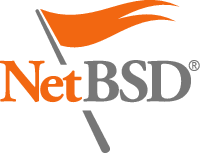Pseudo-devices Supported by NetBSD
Pseudo-device drivers add enhanced features to real devices, or provide device-like interfaces to other subsystems. They come in two flavors: true pseudo-devices (as configured with the `pseudo-device' keyword in the kernel configuration file) and logical devices (which attach as children of real devices during the kernel's autoconfiguration phase).
Please note that these pages reflect the state of NetBSD-current. To check
the supported hardware list for a specific release of NetBSD, check
that release's installation notes.
If you are unsure, please boot a -current kernel or send mail to
<[email protected]>.
- Concatenated disk driver (ccd(4)). This pseudo-device provides a method of combining multiple physical disk components into a single logical disk. The components are either serially concatenated or interleaved (a.k.a. striped, RAID-0). This is useful for combining many small components into a larger, more usable disk, or for enhancing performance on servers. For mirroring or parity, see the RAIDframe driver (raid(4)).
- Memory disk driver (md(4)). This pseudo-device provides a disk-like device in memory, i.e. a `RAM disk'. It has several modes of operation, including a mode which allows a kernel to mount an `injected' RAM disk as the root file system, useful for the install process.
- RAIDframe disk driver (raid(4)). This pseudo-device provides a RAID level 0, 1, 4, and 5 functionality. Allows combining multiple physical disk components into RAID sets.
- Random device driver (rnd(4)). This pseudo-device provides a source of random data (numbers). It has several modes of operation, and produces the random data by gathering entropy from physical devices on the system, and processing that entropy with a cryptographic hash function.
- Vnode disk driver (vnd(4)). This pseudo-device provides a disk-like interface to regular files. This is particularly useful for making or reading raw file system and disk images.
- Audio device driver (audio(4)). This driver provides a consistent interface to sound hardware, which is backwards-compatible with the SunOS audio interface. It provides several audio encodings, including ITU G.711 mu-law, ITU G.711 A-law, signed linear PCM, unsigned linear PCM, and adaptive differential PCM. Source-code level compatibility with OSS Audio (previously known as VoxWare) is provided by a user space library called libossaudio.a. Binary-level compatibility with OSS Audio is provided for programs running in the Linux emulation subsystem. The audio(4) driver also provides a mixer interface. It attaches to hardware devices that fall into the `Sound hardware' category of the supported hardware lists.
- Unified Workstation Console, WSCONS. This is a set of drivers which attach as logical children of various input and output devices on workstations, providing a consistent, event-oriented interface to the hardware, for easier application development. Drivers in the WSCONS suite include wsdisplay(4) (which attaches to display card drivers), wskbd(4) (which attaches to keyboard drivers), and wsmouse(4) (which attaches to mouse drivers). WSCONS provides virtual terminals, flexible terminal emulation (including Sun, VT100, and dumb terminal emulators), and flexible keyboard map support. WSCONS also provides emulation of the PCVT and SYSCONS console interfaces (legacy console drivers for 386BSD, NetBSD, and FreeBSD), raw keyboard compatibility, and compatibility with USL console ioctls, allowing legacy applications and programs for other systems to work (such as Doom on direct VGA). The WSCONS drivers are still under development.
- Bluetooth Hub (bthub(4)). This driver provides a way in which we can attach services on remote devices operating over Bluetooth links to system interfaces. Currently supported services include Human Interface Devices (bthidev(4)) such as mice (btms(4)) and keyboards (btkbd(4)) which attach to wscons(4), and SCO Audio (see btsco(4)) which attaches to audio(4) in a transparent manner.
Back to Hardware Devices Supported by NetBSD
